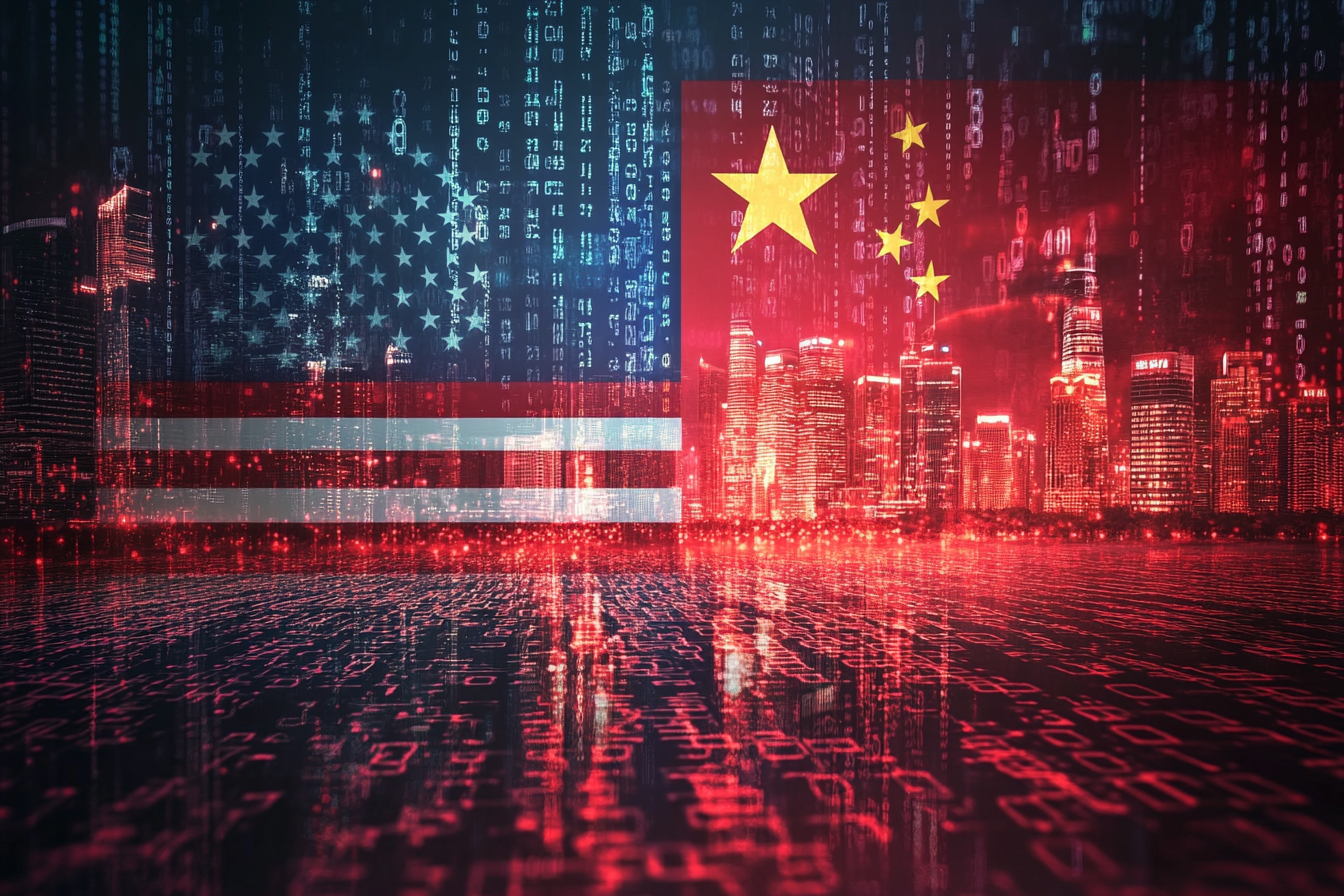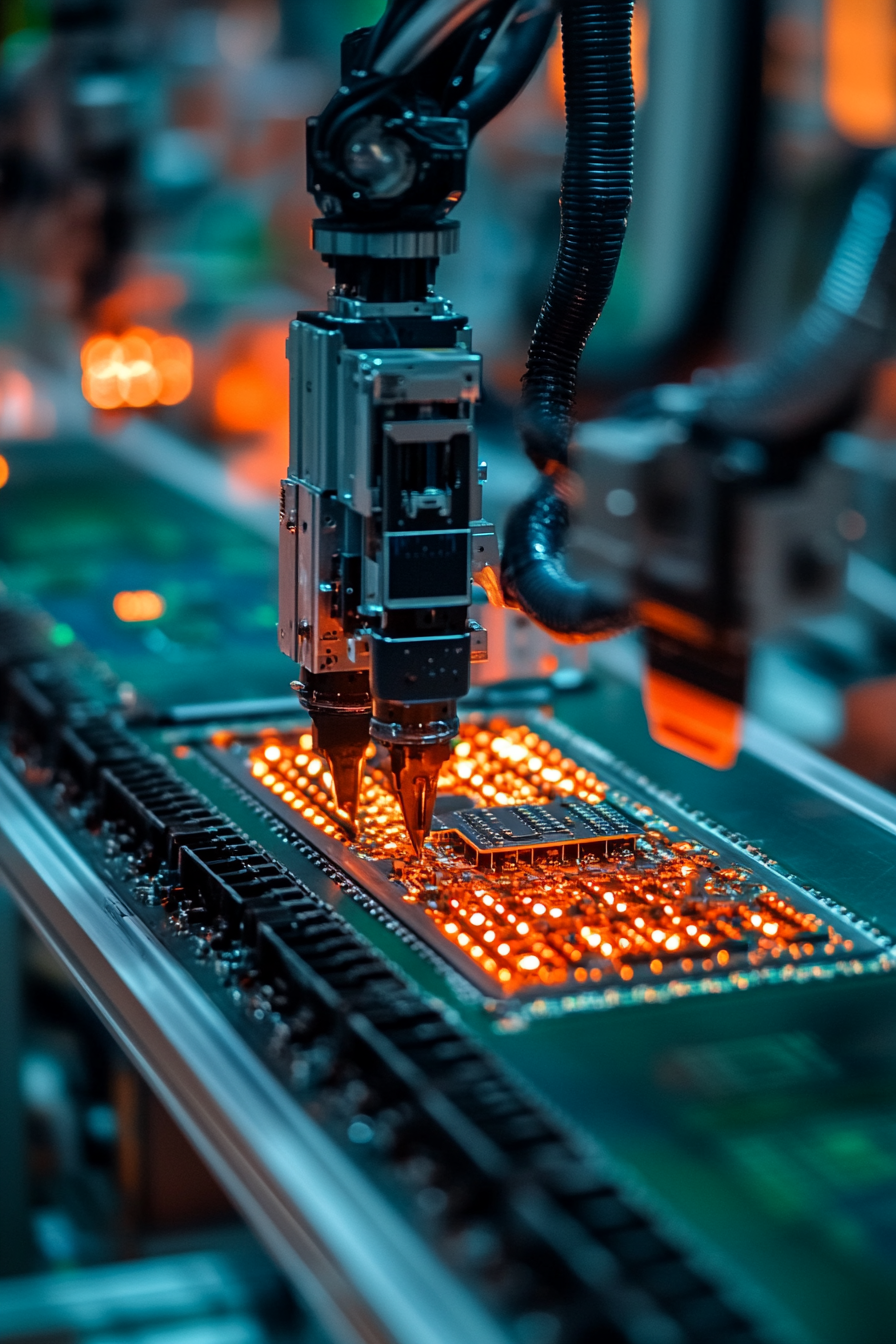AI Chip Race Between the US and China: A Geopolitical and Technological Tug-of-War
The global race for dominance in artificial intelligence (AI) is intensifying, with the United States and China emerging as the key contenders.
Central to this competition is the development and production of advanced AI chips, the specialized hardware that powers AI systems.
Recent developments indicate a dramatic escalation in this technological rivalry, with both countries taking significant steps to secure their position in the AI landscape.
Listen to Podcast
Recent Developments
The Biden administration recently introduced stringent export controls aimed at curbing China’s access to cutting-edge AI chips.
These measures are expected to be implemented in approximately four months and establish a three-tiered system for regulating the sale of advanced chips.
Eighteen key allies and partners will have unrestricted access to U.S. chips. Other nations will face limitations, with the strictest controls imposed on countries deemed to pose a security risk.
This move reflects the U.S. government’s focus on maintaining its technological edge and preventing the offshoring of critical AI technology. These controls are not merely about restricting China – they represent a broader strategy to establish a new paradigm for global AI development and forge strategic alliances.
These export controls build upon previous restrictions enacted in October 2022, which blocked access to advanced semiconductors for China to prevent their use in military applications. The new rules aim to further restrict China’s ability to obtain high-end AI chips, even through smuggling or by exploiting loopholes in existing regulations. However, Chinese developers have demonstrated their determination to circumvent these restrictions by stockpiling chips before they are banned and potentially engaging in smuggling. For instance, DeepSeek, a Chinese AI developer, reportedly amassed a cluster of 10,000 Nvidia A100 GPUs before export controls were introduced.
China has condemned the new policy as an act of “technological containment” and a violation of international trade rules. In response, China is accelerating its efforts to achieve technological self-sufficiency in the semiconductor industry. The Chinese government and private sector are heavily investing in domestic chip production, particularly AI-focused chips, to compete with global leaders.
Latest AI Chips Developed
US Companies
- Graphcore: This company is known for its Intelligence Processing Units (IPUs), specifically designed for AI and machine learning. These IPUs excel in tasks that require parallel processing, such as natural language processing and computer vision, enabling significant advancements in these areas.
- Cerebras Systems: Cerebras has developed the WSE, the largest chip ever built. This groundbreaking processor significantly accelerates processing for AI workloads, particularly the training of large language models, by reducing the time it takes to complete complex calculations.
- SambaNova Systems: SambaNova offers the Dataflow-as-a-Service platform, which seamlessly integrates AI chips and software to provide a comprehensive solution for AI development and deployment. This platform simplifies the process of building and deploying AI applications, making it easier for businesses to leverage AI capabilities.
- Intel: Intel has introduced the Gaudi2 chip, designed for generative AI software and large language model training. This chip boasts impressive power efficiency and has been shown to run AI models 1.5 times faster than Nvidia’s H100 GPU. Additionally, their Core Ultra and Xeon chips are designed to enhance the AI capabilities of laptops and PCs, bringing AI processing power to everyday devices.
- AWS: AWS has released Trainium 2, a chip specifically designed for training large language models. This chip offers quadruple the training speed and triple the memory capacity of its predecessor, Trainium 1. They also produce the Inferentia accelerator, a high-performance, low-cost AI chip that makes AI inference more accessible.
Chinese Companies
- Tencent and ByteDance: These Chinese cloud giants were among the largest buyers of Nvidia’s flagship AI chips in 2024, acquiring approximately 230,000 Hopper GPUs each, despite U.S. export restrictions. This demonstrates the strong demand for AI chips in China and the lengths to which Chinese companies will go to acquire them.
- Alibaba: Alibaba’s T-Head division has developed the Hanguang 800, an AI inference chip deployed at scale in Alibaba’s hyperscale data centers. This chip is designed to handle the massive amounts of data processed by Alibaba’s various businesses, showcasing China’s ability to develop chips for large-scale AI applications.
- Baidu: Baidu has developed the Kunlun AI chip, which has received strategic investment from Beijing’s AI Industry Investment Fund. This investment highlights the Chinese government’s support for domestic chip development and its commitment to fostering a competitive AI industry.
- Cambricon Technologies: Cambricon has achieved a significant milestone by posting its first quarterly profit in late 2024. This achievement highlights China’s progress in pursuing technological autonomy in the AI chip sector. Cambricon’s success is partly attributed to the increased demand for its products following U.S. restrictions on Nvidia’s AI GPUs.
- DeepSeek: DeepSeek has developed the DeepSeek-V3, an open-source large language model with 671 billion parameters. This model, which utilizes a Mixture-of-Experts (MoE) architecture, demonstrates China’s ability to develop advanced AI models despite limited access to high-end chips. DeepSeek-V3 is notable for its speed and efficiency, processing information at 60 tokens per second, three times faster than its predecessor.
Implications of the AI Chip Race
The AI chip race has significant implications for both the U.S. and China:
For the U.S.:
- Maintaining Technological Leadership: The U.S. aims to maintain its leadership in AI by controlling the flow of advanced AI chips and ensuring that “the world’s AI runs on American rails.” This strategy involves not only restricting China but also fostering collaboration with allies and shaping global AI development.
- National Security: The U.S. government views AI as critical to national security and seeks to prevent adversaries from accessing technology that could be used for military purposes. This concern is driving export controls and increased collaboration with intelligence agencies.
- Economic Impact: While the export controls aim to protect U.S. interests, they could also impact the revenue streams of U.S. chip manufacturers like Nvidia, AMD, and Intel, who rely on China as a significant market. This raises concerns about the potential for unintended economic consequences.
Share This Post
For China:
- Technological Self-Reliance: China is accelerating its efforts to develop indigenous semiconductor technologies to reduce its dependence on foreign suppliers. This drive for self-sufficiency is fueled by both economic and national security considerations.
- Economic Growth: The AI chip race is driving significant investment in China’s domestic semiconductor industry, contributing to economic growth and technological advancement. This investment is creating new opportunities for Chinese companies and fostering innovation.
- Global Competitiveness: China aims to become a global leader in AI, and the development of advanced AI chips is crucial to achieving this goal. Despite facing challenges, Chinese companies like Tencent are developing AI models that outperform those of U.S. companies, demonstrating the resilience and innovation of the Chinese AI sector.
Overall Implications:
Beyond the specific impacts on the U.S. and China, the AI chip race has broader implications.
The increasing demand for AI chips is likely to create a mismatch between supply and demand, leading to inflexible pricing and limited supplier choice. This could affect the development and deployment of AI applications across various industries.
Predictions and Forecasts
- Continued Growth: The AI chip market is expected to continue its rapid growth, with the global market projected to reach USD 902.65 billion by 2029. This growth is driven by increasing demand for AI applications in various sectors, including healthcare, finance, and autonomous driving.
- Edge Computing: The adoption of AI chips in edge devices like smartphones and PCs is expected to increase. This will bring AI capabilities to a wider range of devices, enabling new applications and experiences.
- Intensified Competition: The competition between the U.S. and China in the AI chip market is likely to intensify, with both countries striving for technological dominance. This competition will drive further innovation and investment in AI chip development.
- National Security Focus: Governments are increasingly viewing AI through the lens of national security, which is influencing policy decisions and collaborations. This trend is likely to shape the future of AI development and deployment.
- Chiplet Technology: Chiplet technology, which involves combining smaller chips to create more complex systems, is expected to play a significant role in the future of AI chip development. This technology offers advantages in terms of cost, performance, and flexibility.
Policy Changes and Government Initiatives
US
- Export Controls: The Biden administration’s new export controls represent a significant policy shift aimed at restricting China’s access to advanced AI chips. This policy divides countries into three tiers, with varying levels of access to U.S. AI technology.
- AI Infrastructure: Biden also issued an executive order on AI infrastructure, designed to keep new construction for advanced AI operations on U.S. soil. This initiative aims to strengthen the U.S. AI ecosystem and ensure the security of critical infrastructure.
- Collaboration with Allies: The U.S. is coordinating with allies like Japan, South Korea, and the Netherlands to implement similar export restrictions and prevent advanced chip technologies from reaching China. This reflects a broader strategy to build alliances and shape the global AI landscape.
- Diplomatic Leverage: The U.S. is using AI chip exports as a diplomatic tool to extract geopolitical and technological concessions from other countries. This strategy involves negotiating with countries that seek access to U.S. AI technology and leveraging those exports to achieve strategic goals.
- Cybersecurity Collaboration: The U.S. government is collaborating with tech firms to share information on security threats to AI models. This partnership aims to enhance the cybersecurity of AI systems and protect against potential vulnerabilities.
China
- Made in China 2025: This plan aims to achieve a high degree of self-sufficiency in frontier sectors, including information technology. This reflects China’s long-term goal of reducing its reliance on foreign technology.
- China Standards 2023: This initiative aims to position Chinese industry at the forefront of developing global standards in emerging technologies like AI. This demonstrates China’s ambition to shape the future of AI and exert greater influence in the global tech landscape.
- Investment in Domestic Chip Production: The Chinese government is providing significant financial support and incentives to domestic chip manufacturers. This investment is crucial to China’s efforts to achieve self-reliance in the semiconductor industry.
Market Share:
| Region/Country | Market Share (%) | Key Players |
|---|---|---|
| North America | 45+ | AMD, Intel, Nvidia, Qualcomm, TSMC |
| China | 53.7 (2020) | SMIC, Huawei |
| Global | - | Data Not Available |
Industry Voices
Marc Benioff, CEO of Salesforce, emphasizes the transformative potential of AI, stating that “Artificial intelligence and generative AI may be the most important technology of any lifetime.” This highlights the growing recognition of AI’s significance across various sectors.
Conclusion
The AI chip race between the U.S. and China is a critical aspect of the broader competition for technological leadership in the 21st century. Both countries recognize the strategic importance of AI and are taking significant steps to secure their position in this rapidly evolving landscape. The U.S. is leveraging its technological prowess and alliances to maintain its edge, while China is aggressively pursuing self-reliance and innovation to close the gap. The outcome of this race will have profound implications for the global economy, national security, and the future of artificial intelligence.
However, this competition also raises important questions about the ethical implications of AI development and the potential for unintended consequences. As AI systems become more powerful and pervasive, it is crucial to consider the societal impact of this technology and ensure its responsible development and deployment. International cooperation may be necessary to address these challenges and shape a future where AI benefits all of humanity.











